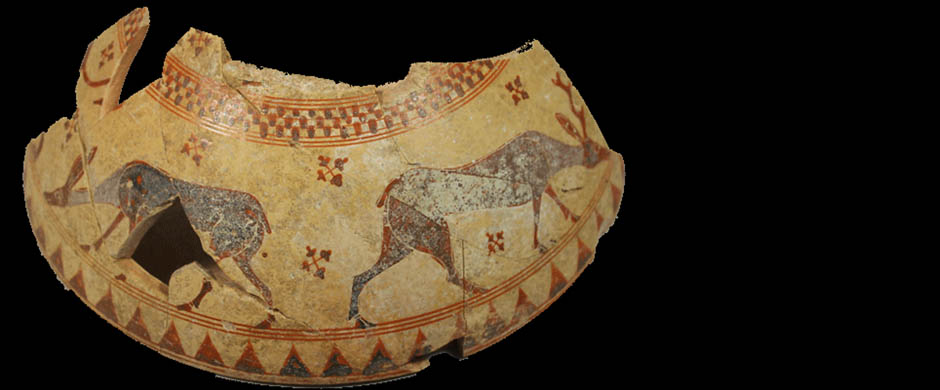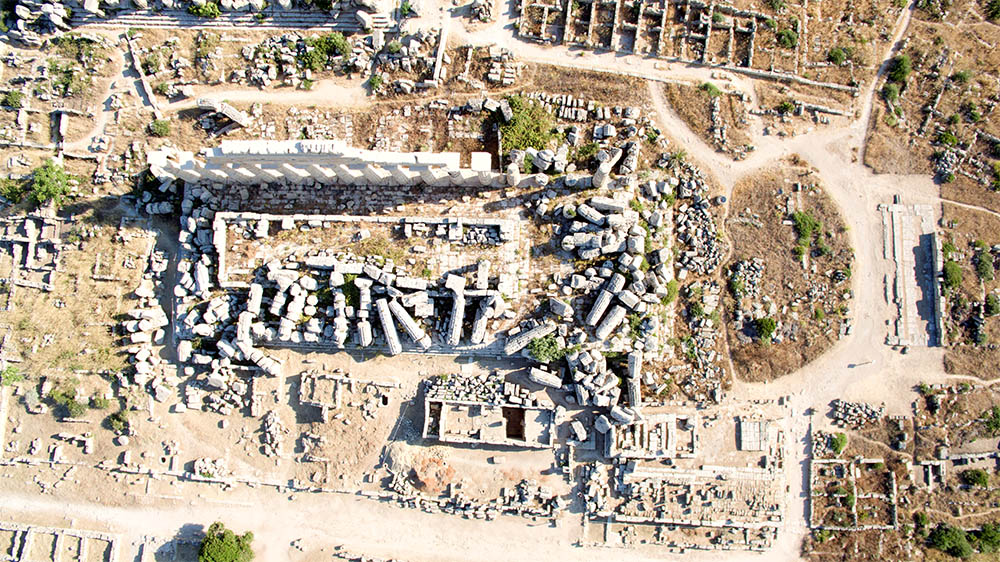 | In the Field
| In the Field

IFA Excavations at Selinunte
Project Synopsis
Selinunte is one of the most important archaeological sites of the Greek period in Italy [Figure 1]. The city was famous throughout the ancient world for the richness of its farmland and its monumental temples. It enjoyed a prosperous existence from the second half of the seventh century BCE through the end of the middle of the third century BCE, and its public spaces, temples, fortifications, and houses are remarkably well preserved. The excavations document the social history as well as the architectural and visual culture of an ancient city in unusually fine detail.

Figure 1. Urban plan of Selinunte ca. 410 BCE. Daniele Bursich and Clemente Marconi, after Mertens 2006. © Institute of Fine Arts, NYU).
In 2006, the Institute of Fine Arts, in collaboration first with the Superintendency of Trapani and later the newly established Archaeological Park of Selinunte, initiated a project of topographical, architectural, and archaeological investigation of the main urban sanctuary on the Acropolis. This was one of the largest public areas in the city, best known for its two large peripteral temples of the second half of the sixth century: Temple C, dedicated to Apollo, well-known for its large pedimental gorgoneion and relief metopes featuring divine figures and heroic feats; and Temple D, dedicated to Athena. These large temples, their altars, and the stoas along the eastern and southern edges, mark this sanctuary as one of the main spaces for public cult and ritual activities before the Carthaginian capture in 409 BCE. In the third quarter of the fourth century, when Selinus was extensively redeveloped within a general recovery of Sicily, the concentration of civic life on the south hill led to the occupation of much of the sanctuary with shops and residential housing, until the abandonment of Selinus in the First Punic War.
Within this large and complex area, our attention has focused upon the southern portion of the main urban sanctuary, encompassing Temple C (ca. 540 BCE), Temple B (ca. 300 BCE), Temple R (ca. 580 BCE), and the so-called “South Building,” the latter placed against the peribolos wall to the south of Temple B [Figure 2].

Figure 2: Aerial view of area of investigation. © Institute of Fine Arts, NYU.
Our topographic and architectural investigations, comprised of a new block-by-block study of the buildings, based on a detailed graphic and digital documentation of the remains both at the site and in the Archaeological Museum in Palermo, has provided a new, complete reconstruction of Temple B (restored by us as a prostyle tetrastyle of the Doric order, resting on a podium) and Temple R. These temples represent respectively one of the latest and one of the earliest monumental buildings at the site, and are among the most significant representatives of temple architecture on the island for their respective periods. No less important is the new analysis of the South Building, which suggests its identification as an impressive theatral viewing area, simple in design yet monumental in scale, with a capacity of c. 500 seated people. This building may have served for viewing a variety of ritual performances in the open space between Temple R, probably of Demeter Thesmophoros, and the entrance to the larger sanctuary: one thinks, in particular, of processions for sacrifices, contests and festivities.
Stratigaphic excavations conducted in conjunction with these architectural studies since 2007 have discovered an almost intact stratigraphic sequence ranging from the Early Hellenistic period down to the Bronze Age [Figure 3]. This invaluable contextual evidence contributes significant new evidence concerning the history of occupation at the site, particularly for its earliest phases, including the time of the colonial foundation. The excavation of the intact Archaic, Classical, and Late Classical levels, sealed by a thick Hellenistic fill, inside the cella of Temple R, provides important new evidence concerning cult and ritual practice in this area of the sanctuary between ca. 630 and 350 BCE. Furthermore, the new analysis of Temple B and the excavations around its altar contribute significantly to our understanding of the cultural dynamics during the later phase of occupation at Selinus, under the control of Carthage yet with a mixed Greek and Punic population.

Figure 3: Southern sector of the main urban sanctuary of Selinunte. Above: aerial view. Bottom: plan indicating principal buildings and trenches excavated 2009-2021. Drawing by Massimo Limoncelli, Filippo Piscotta and David Scahill, © Institute of Fine Arts, NYU.
Sponsors
The Selinunte excavations are sponsored by the Institute of Fine Arts of New York University, with invaluable support from the Malcolm Hewitt Wiener Foundation, the 1984 Foundation, the Kress Foundation, the Samuel I. Newhouse Foundation and private individuals. We are very grateful to all our loyal supporters for their generosity.